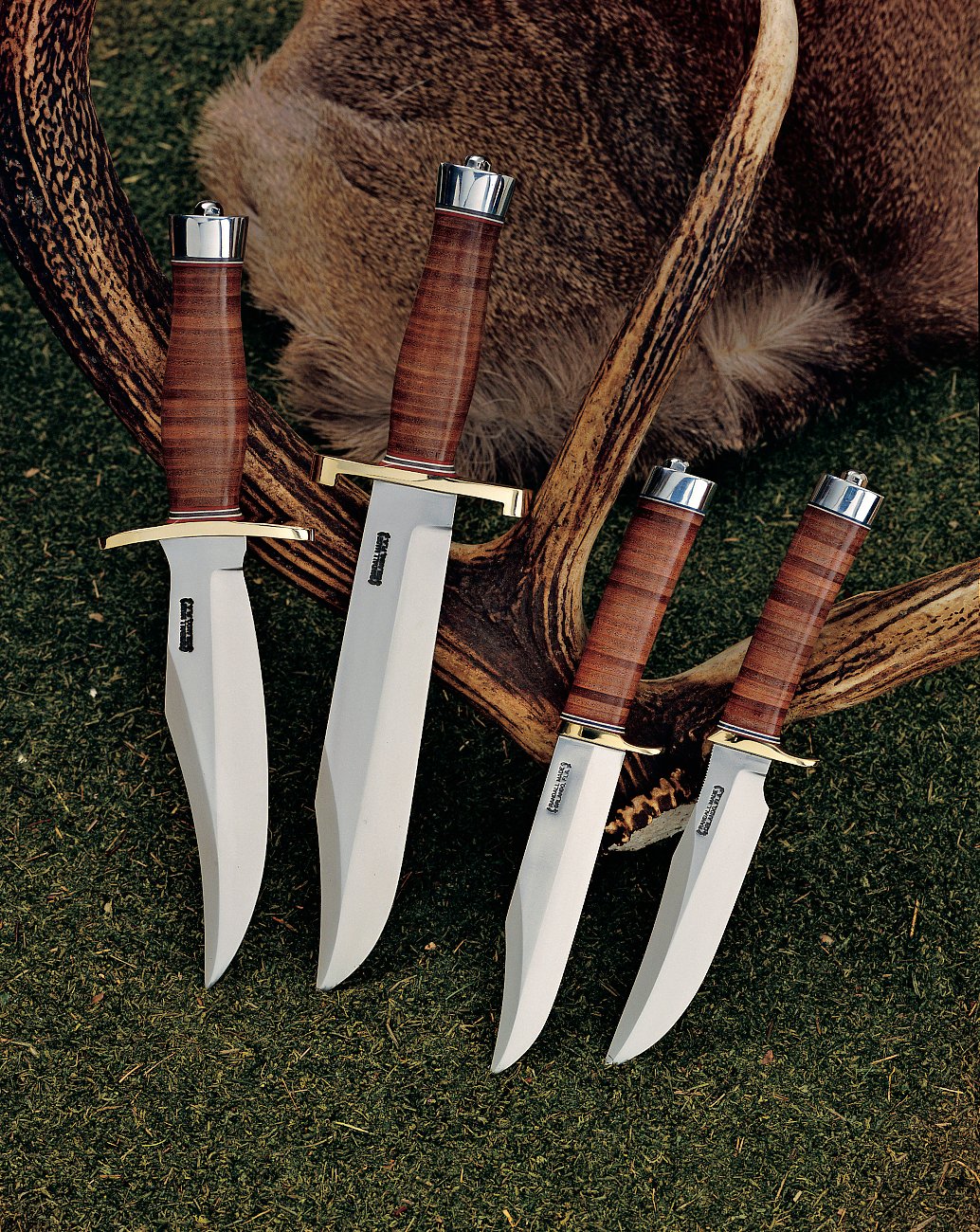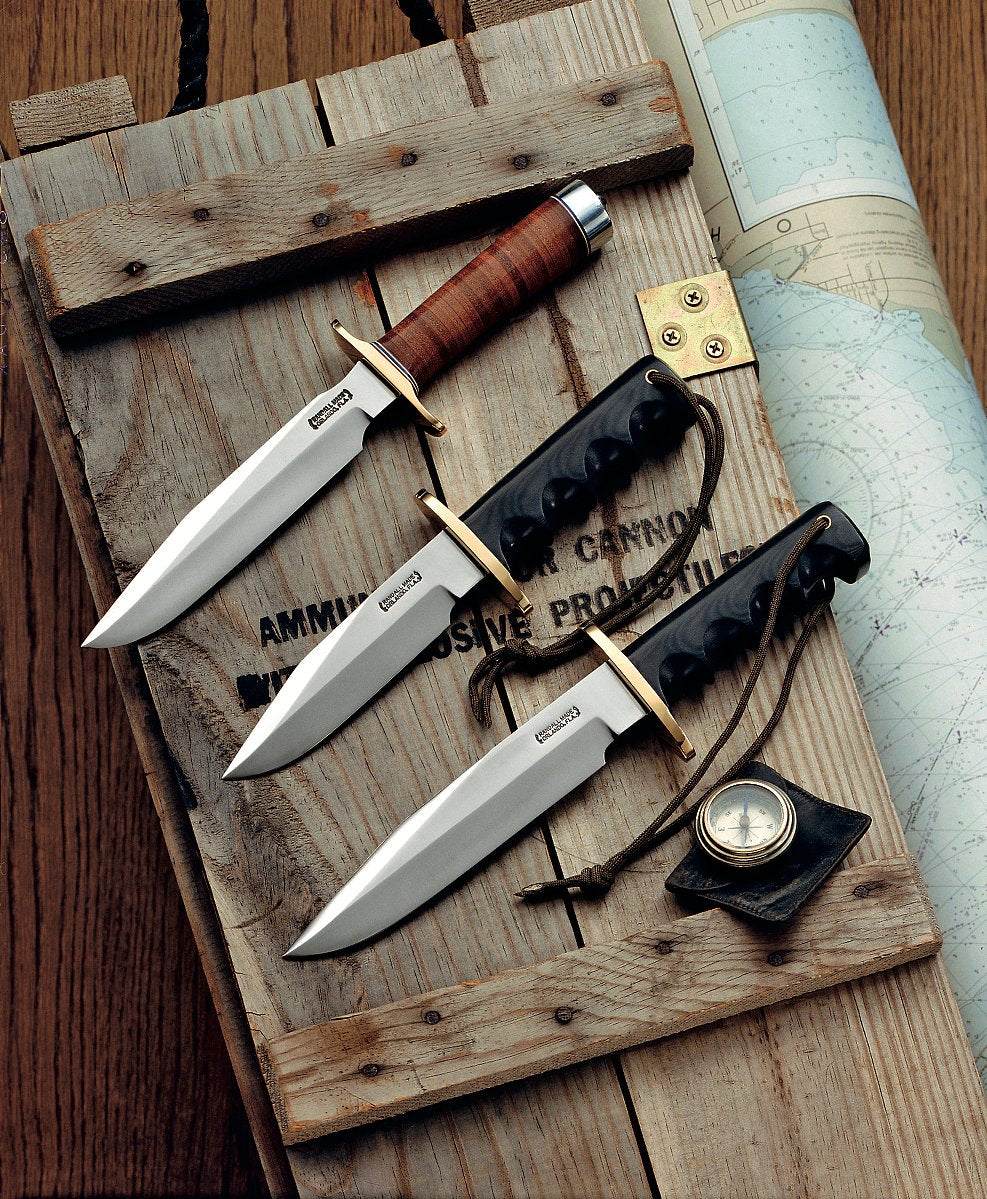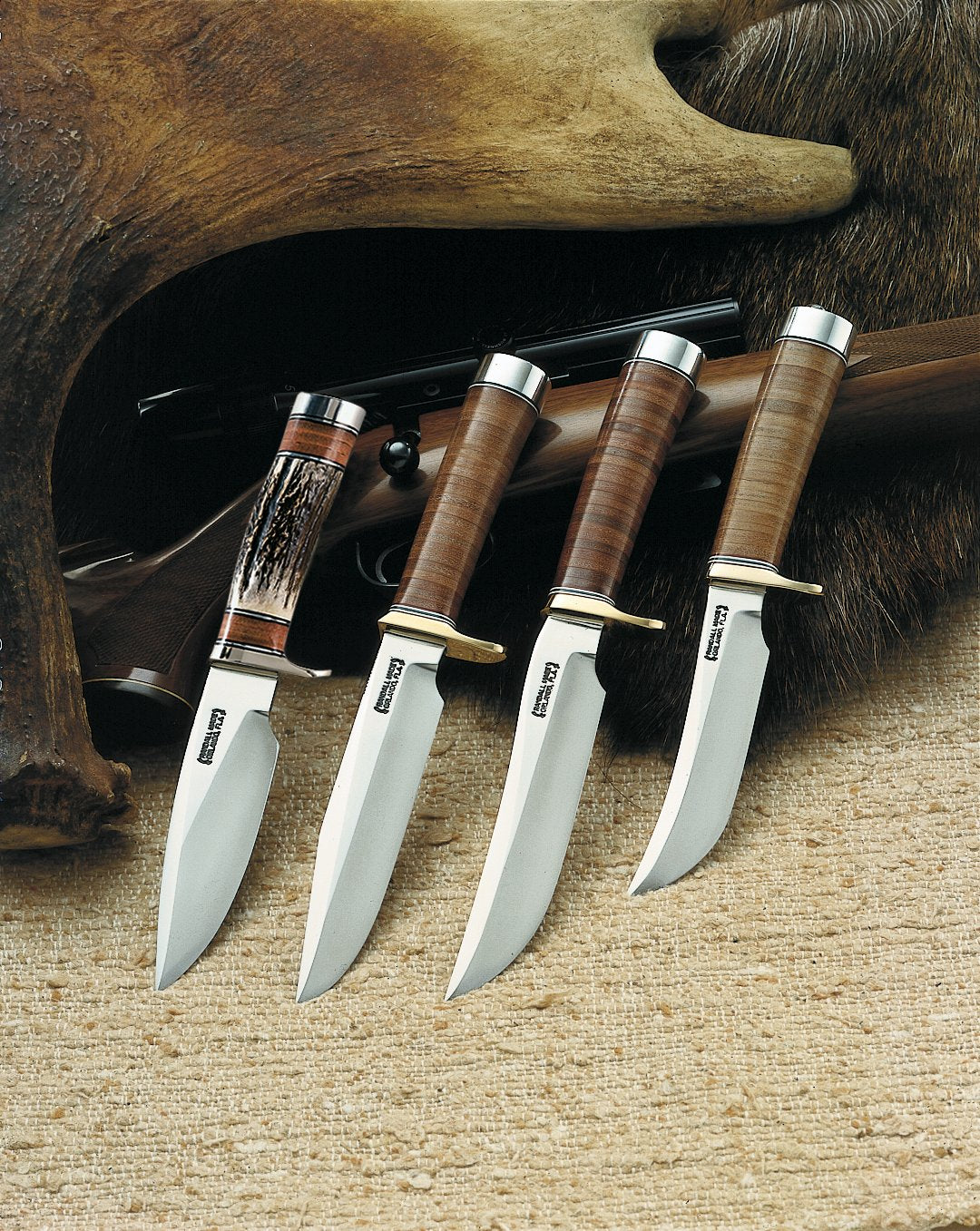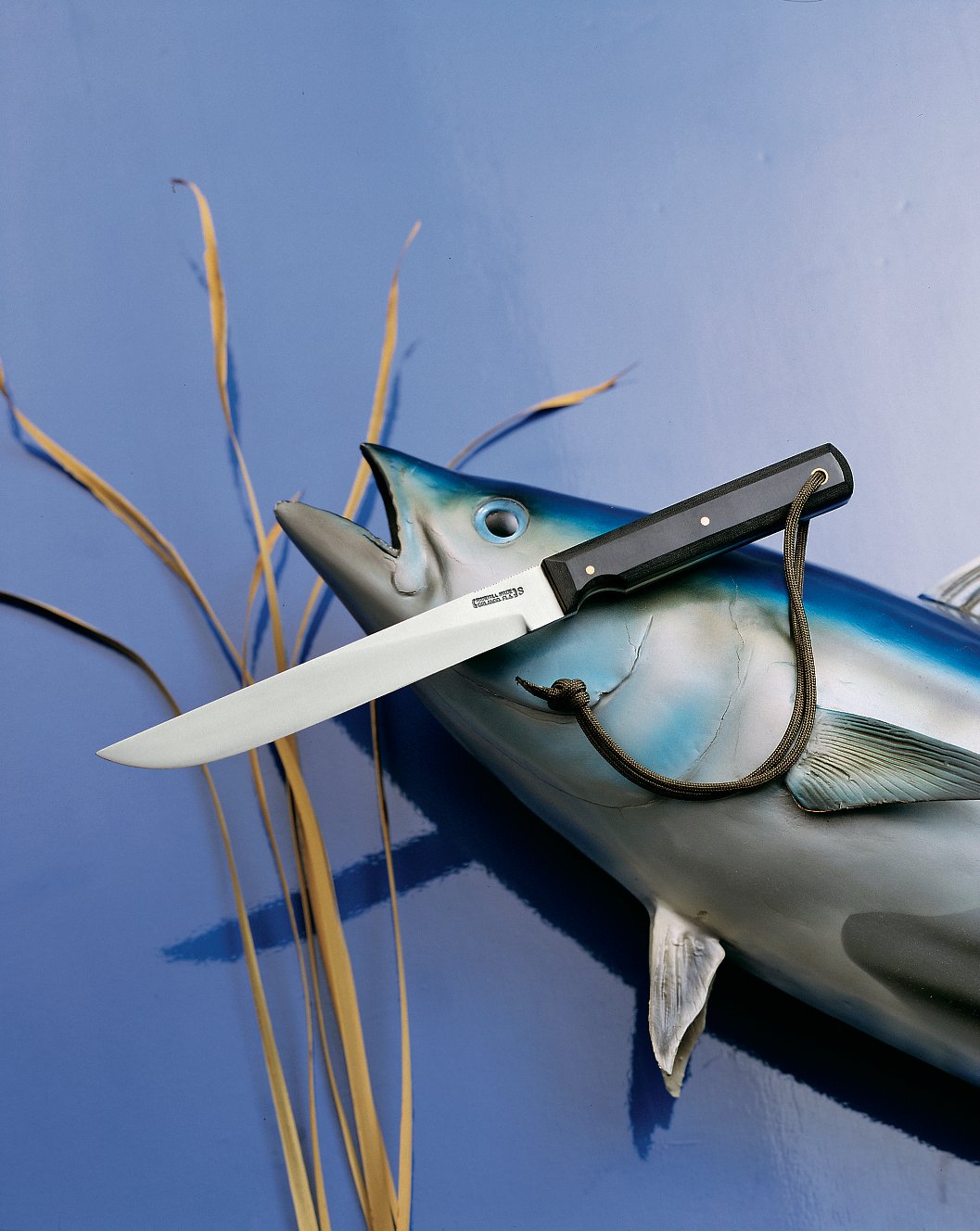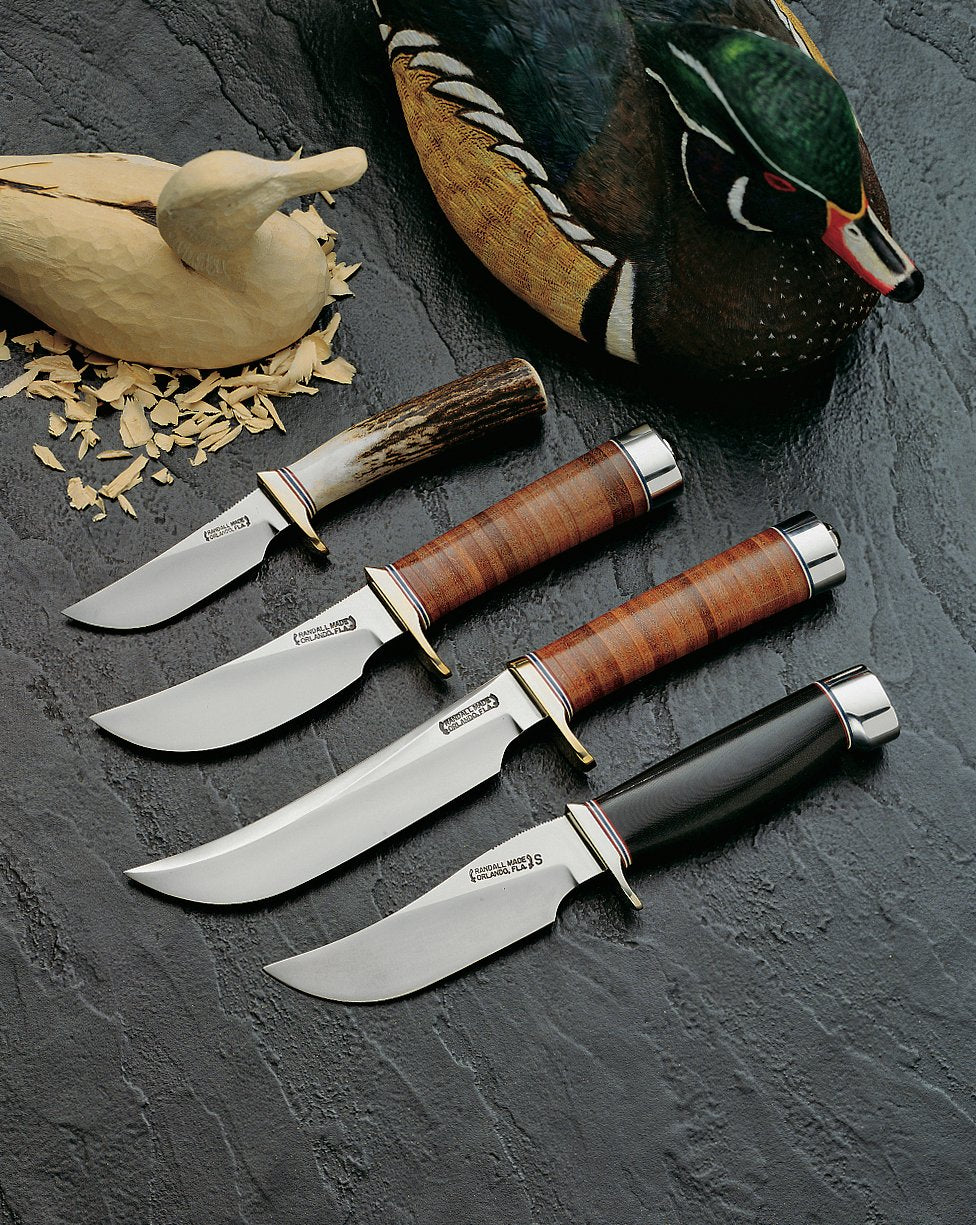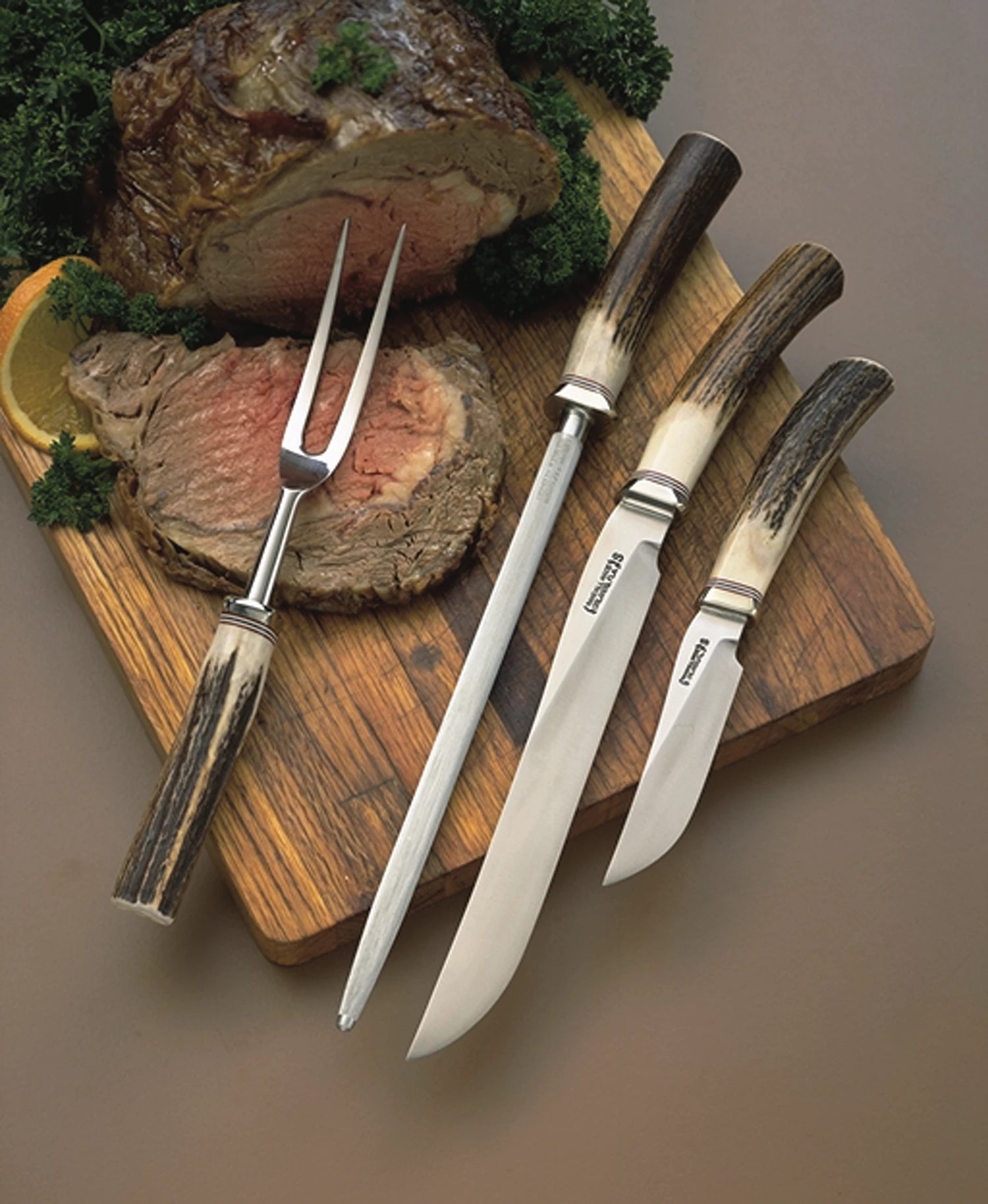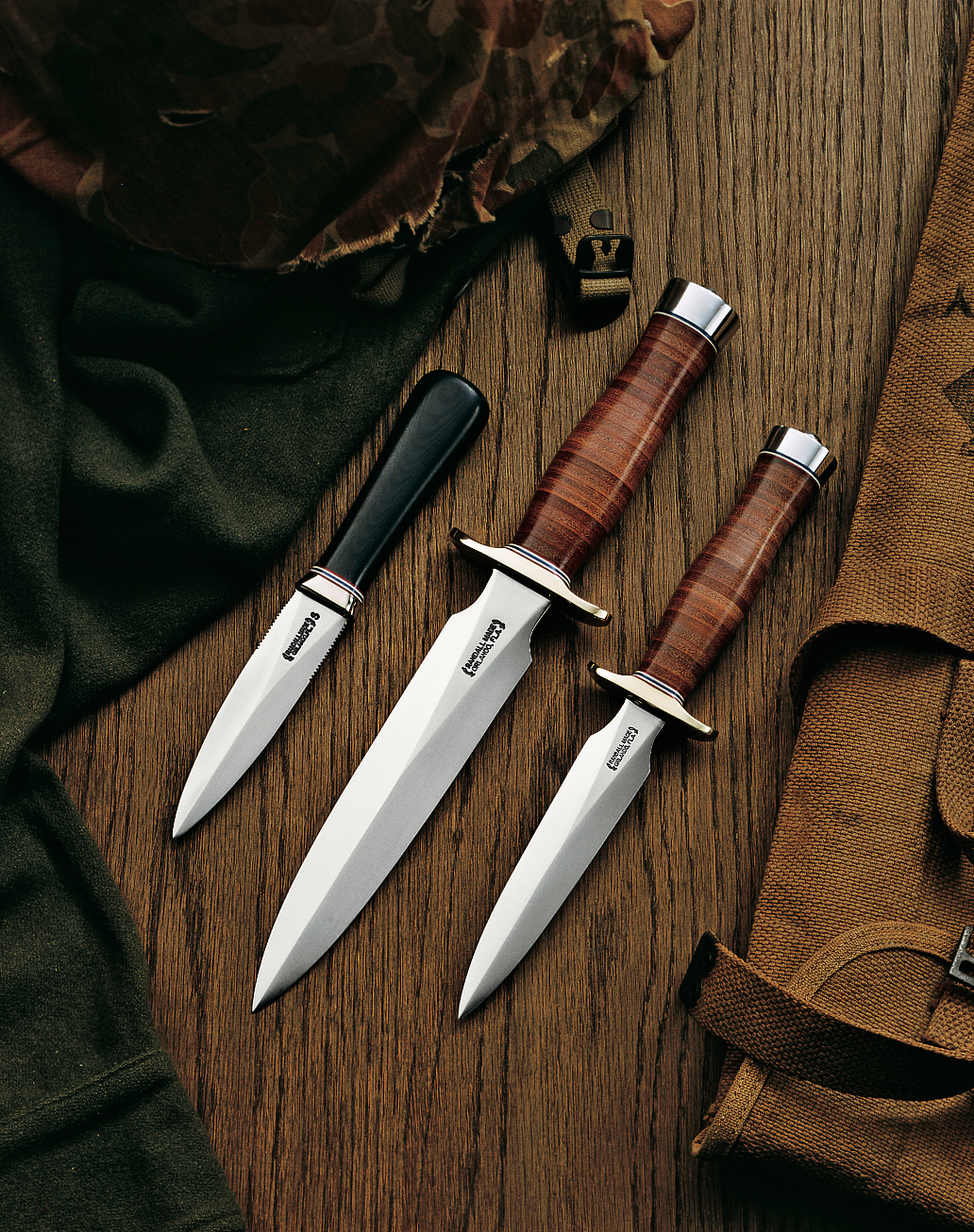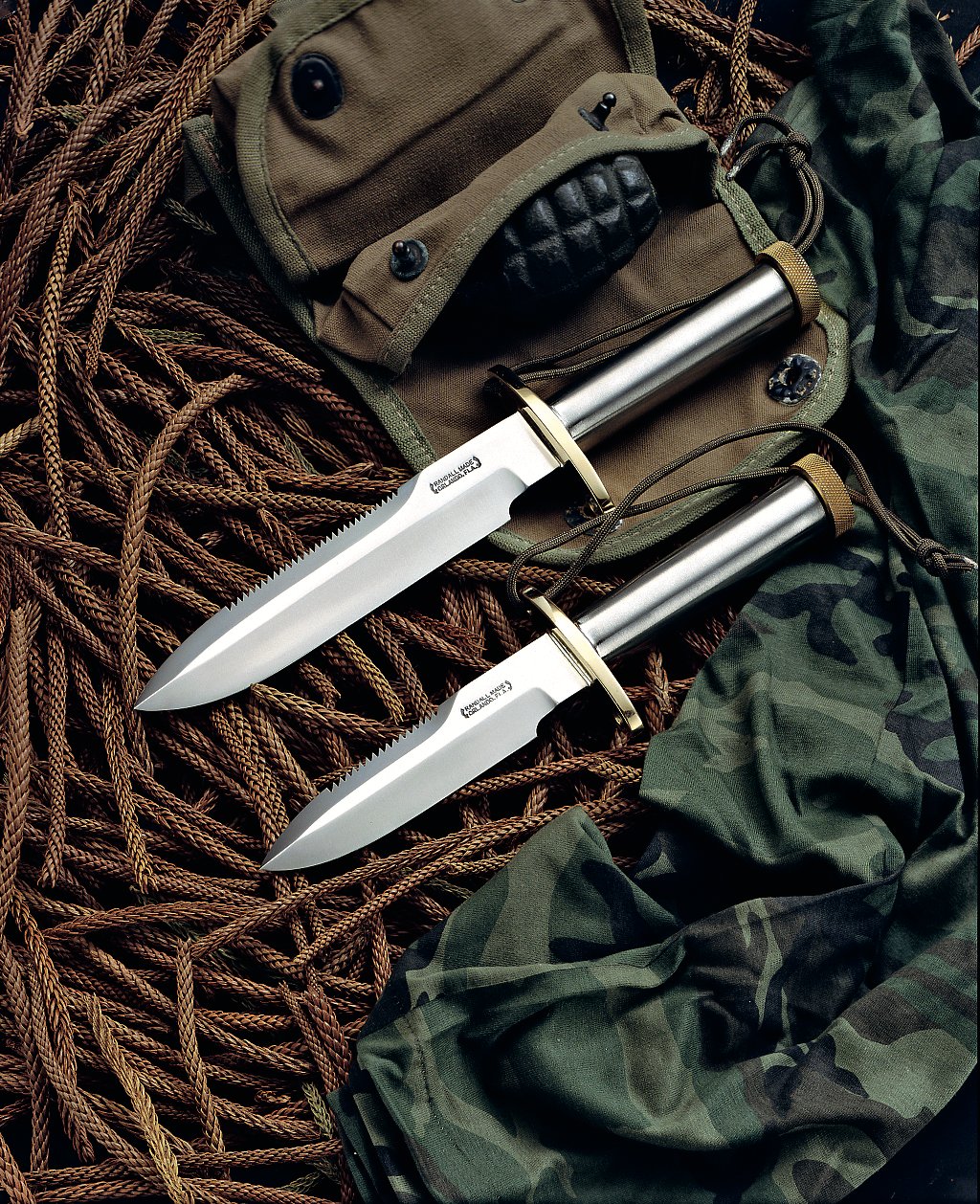Before it leaves our shop, the cutting edge of every Randall Made™ knife is carefully honed by hand, ready to use for its intended purpose. However, the bevel and edge of a knife designed for cutting skin and flesh are much different from those used to hack bone or other hard materials.
All knives require sharpening occasionally after use. We recommend that the blade be kept well honed at all times, for a sharp knife is safer to use than a dull one.
To request repair, please fill out the form on our contact page
General Tips
- Using a fine hunting knife for an axe will naturally damage its cutting edge. And pounding, prying, or throwing a knife not designed for these purposes is likely to damage it.
- We strongly suggest that if you’ll use your knife for a specific heavy-duty purpose, let us know when you order so we can shape the blade and bevel accordingly.
- To protect your knife, it should be cleaned and thoroughly dried after use. If it will be stored for some time, coat it with a protective and leave it out of the sheath. Many owners of Randall Made™ knives say they successfully care for them by exhibiting them on their wall or desk.
Knives
- Carving knives require the same care as hunting knives. It is not advisable to immerse them in water with regular tableware. Wiping and drying the blade is generally sufficient. All carbon steel blades will become stained in cutting meat because of acids in the meat; this discoloration will not harm the blade.
Rust Removal
- If through lack of care rust appears on the blade, remove it before pitting begins by using a fine grip emery cloth or steel wool and oil.
Knife-Throwing
- Never throw a knife unless you’re an expert and know you won’t make a poor throw that harms the knife. If the urge to throw a knife is overpowering, it is advisable to obtain our Model 9 Pro Thrower.
Cutting
- You cannot cut bone, nails, bolts or pierce metal with a cutting edge and point designed for meat, despite some advertising to the contrary. We have done extensive tests and find such feats cannot be performed unless the design of the cutting edge and point is altered.
Leather Handles & Sheaths
- On leather handles, use a light liquid leather conditioner to keep the leather from drying out. Use metal polish on the hilt and butt.
- For the sheath, use a light liquid leather conditioner. We do NOT advise using oil because it will soften the leather and keep the sheath flexible, making it difficult to sheathe the knife. To darken the sheath, use dark polish or dye.




